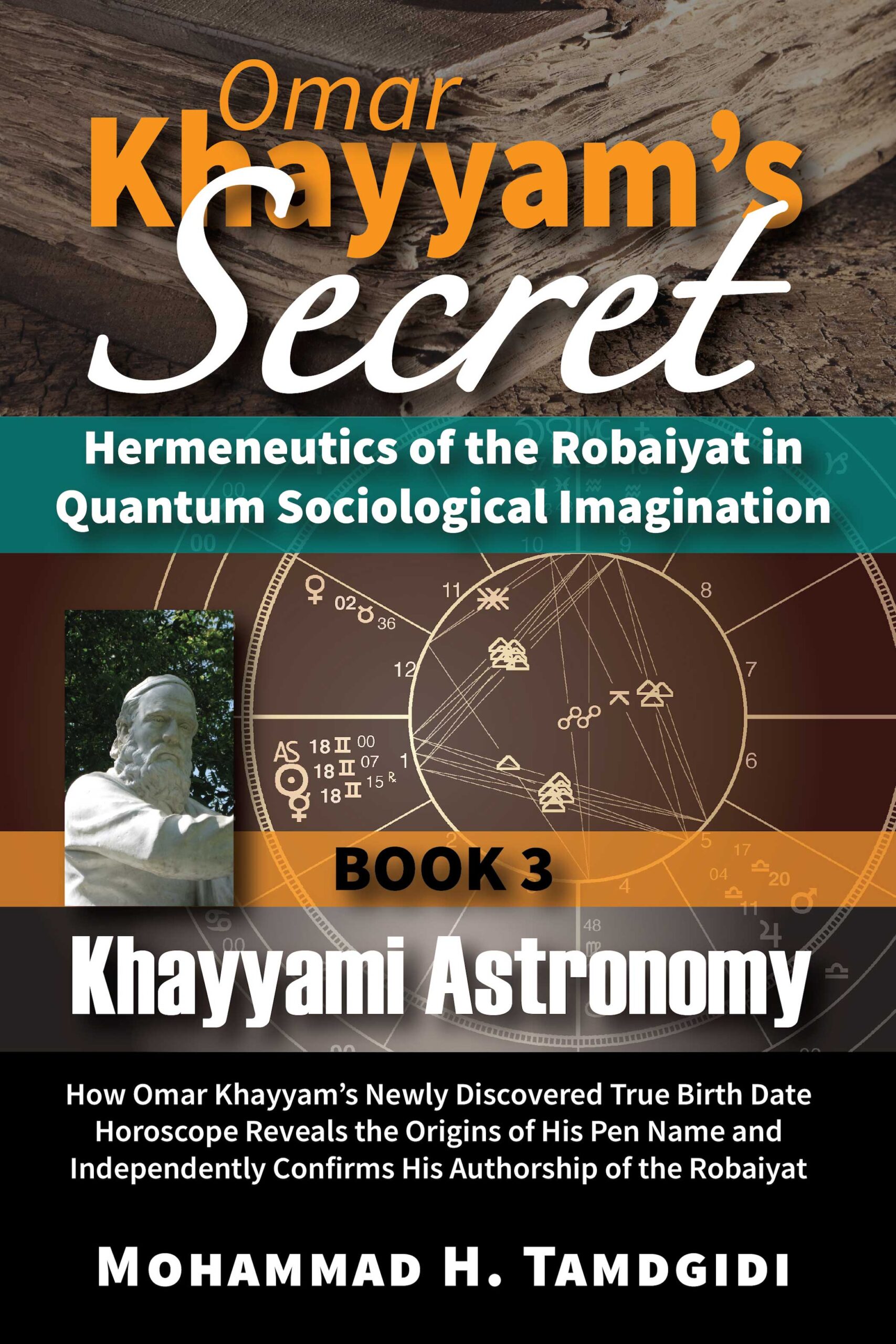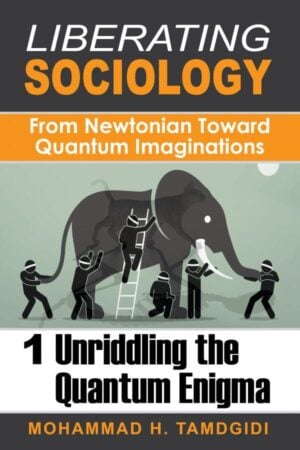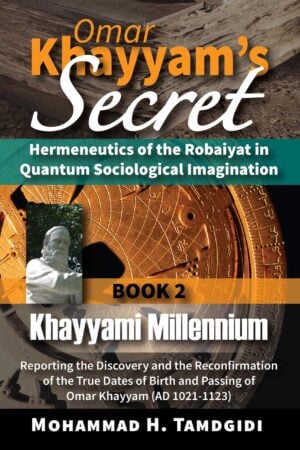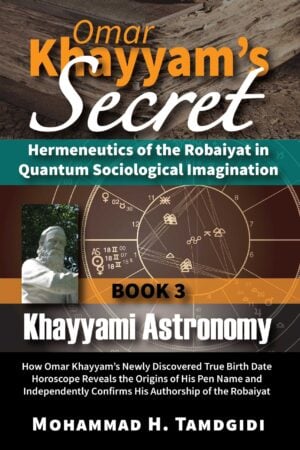Book Section: CHAPTER II — Considering Both the Stated and the Silent Features of Omar Khayyam’s True Birth Date Horoscope — by Mohammad H. Tamdgidi
$20.00
This essay, titled “Considering Both the Stated and the Silent Features of Omar Khayyam’s True Birth Date Horoscope” is the second chapter of the book Khayyami Astronomy: How the Newly Discovered True Birth Horoscope of Omar Khayyam Reveals the Origins of His Pen Name and Independently Confirms His Authorship of the Robaiyat, which is the third volume of the twelve-book series Omar Khayyam’s Secret: Hermeneutics of the Robaiyat in Quantum Sociological Imagination, authored by Mohammad H. Tamdgidi.
Description
Abstract
This essay, titled “Considering Both the Stated and the Silent Features of Omar Khayyam’s True Birth Date Horoscope” is the second chapter of the book Khayyami Astronomy: How the Newly Discovered True Birth Horoscope of Omar Khayyam Reveals the Origins of His Pen Name and Independently Confirms His Authorship of the Robaiyat, which is the third volume of the twelve-book series Omar Khayyam’s Secret: Hermeneutics of the Robaiyat in Quantum Sociological Imagination, authored by Mohammad H. Tamdgidi.
The author assumes in this and subsequent chapters that the reader has, or is able to obtain, information on some of the basic vocabulary and ways of calculation and interpretation in astrology. So, he will not include in this book a separate chapter on the basics of astrological vocabulary and analysis in a detailed way, and let the insights of this ancient belief system be explored (and learned, or introduced) in a practical and applied way as part of the hermeneutic analysis to follow. The authors suggest that the basic ancient idea that guides astrology is what has been referred to as the expression, “as above, so below.” The idea is that what goes on in our own lives on Earth are somehow linked to what goes in the heavens. Astrology is basically an ancient belief system humanity invented in order to understand how such a process and linkage may be specifically manifested, in order to put such an understanding then to use in a practical way for improving the human lot.
The purpose of this chapter is to explain technically the astrological features of Khayyam’s true birth date chart. Tamdgidi’s aim is not yet to interpret the features, but to establish the basic facts of the configuration of “planets” and their aspectations as found in Khayyam’s birth chart. He offered an overview of the purpose of astrological analysis and presents the basic aspectations of Khayyam’s horoscope, pointing out how some of such aspectations are stated and some remain silent in his reported horoscope.
Tamdgidi argues that a reported story about Khayyam having considered his birth chart to be a rare event in a thousand years, as reported by the poet Khaqani, may actually be valid, at least as far as its rarity in the century Khayyam lived is concerned. Such an observation on the part of Khayyam actually indicates that he must have been aware of the wider, silent, aspectations of his chart, since during his lifetime those aspectations as verbalized in his chart were more or less repeated.
The author also compares Khayyam’s true birth chart with the false variant based on Tīrtha’s erroneous proposal for Khayyam’s date of birth, demonstrating how the latter was completely absent of the dazzling number of Triplicities that can readily be observed in Khayyam’s true birth horoscope. Tamdgidi also offers further clarifications regarding what consideration he made about orbs in drawing Khayyam’s chart for the hermeneutic analysis to follow.
Considering Khayyam’s natal chart as a whole as far as Trines and Triplicities are concerned, with the seven known planets at the time, and the AS and MC points included, we have a total of 16 Trines, and a dense group of 9 Triplicities, all of which share, or are tied, or fastened, in one single moment, the Sun/Mercury Samimi (Cazimi) point which happens to share the same degree 18 of Gemini of the Ascendant. All of these Triplicities are of the Air type, meaning that all their points fall in the triad Gemini, Aquarius, and Libra, representing all qualities of Air in astrological terms (mutable, fixed, and cardinal, respectively).
Of course, the most prominent aspect of Khayyam’s horoscope as stated explicitly by Khayyam himself is the Samimi or Cazimi aspect between the Sun and the Mercury coinciding with the degree of the Ascendant. In other words, when Khayyam was born, Mercury was in the heart of the Sun at the exact moment of sunrise at dawn.
There are also three Sextiles (which are semi-Trines, in Persian/Arabic called “Tasdees” or تسديس) between Venus on one hand and Moon, North Node and MC on the other, given the distances involved fall within about 60 degrees (sixth of 360 degrees) range; a semi-Trine, or Trine “by effort” rather than “naturally predisposed,” denotes when an implied attribute is naturally embedded but must be evoked by conscious and intentional effort rather than existing and arising habitually and naturally, as astrologists interpret the matter.
We also have an Inconjunct between Moon and Jupiter, two Oppositions between the South Node on one hand and the Moon and North Node on the other.
There are no squares, as far as the seven-planet natal chart for Khayyam as known to him is concerned.
In Tamdgidi’s view, hermeneutically, and biographically, we will have to raise and explore an important question regarding when and how did Khayyam succeed in definitively ascertaining for himself that his Sun-Mercury conjunction was a Samimi/Cazimi case, and not one of being “burned-out”? Khayyam could have lived a good third or more part of his life not being sure, yet, whether his life was Cazimi influenced, rather than being “burned out.”
If Khayyam reportedly spoke of the rarity of planetary constellations at the time of his birth, he must have had the wider configuration involving all the planets, astrological indicators, and their aspectations involved, in mind.
The silent, unstated, aspects of his horoscope, therefore, are as important as those stated in the formal natal chart statement, and Khayyam was aware of the wider architecture of his horoscope but decided to share only a part, a part that would be minimally sufficient to convey both his birth date and what was needed to hint at the wider scope of his horoscope.
In hermeneutic analysis it is often as important to notice what is stated as what is not. The silences can be as important in understanding the original message an author wished to convey.
Recommended Citation
Tamdgidi, Mohammad H. 2021. “CHAPTER II — Considering Both the Stated and the Silent Features of Omar Khayyam’s True Birth Date Horoscope.” Pp. 53-88 in Omar Khayyam’s Secret: Hermeneutics of the Robaiyat in Quantum Sociological Imagination: Book 3: Khayyami Astronomy: How Omar Khayyam’s Newly Discovered True Birth Date Horoscope Reveals the Origins of His Pen Name and Independently Confirms His Authorship of the Robaiyat. (Human Architecture: Journal of the Sociology of Self-Knowledge: Vol. XVI, 2021. Tayyebeh Series in East-West Research and Translation.) Belmont, MA: Okcir Press.
Where to Purchase Complete Book: The various editions of the volume of which this Book Section is a part can be ordered from the Okcir Store and all major online bookstores worldwide (such as Amazon, Barnes&Noble, Google Play, and others).
Read the Above Publication Online
To read the above publication online, you need to be logged in as an OKCIR Library member with a valid access. In that case just click on the large PDF icon below to access the publication. Make sure you refresh your browser page after logging in.







